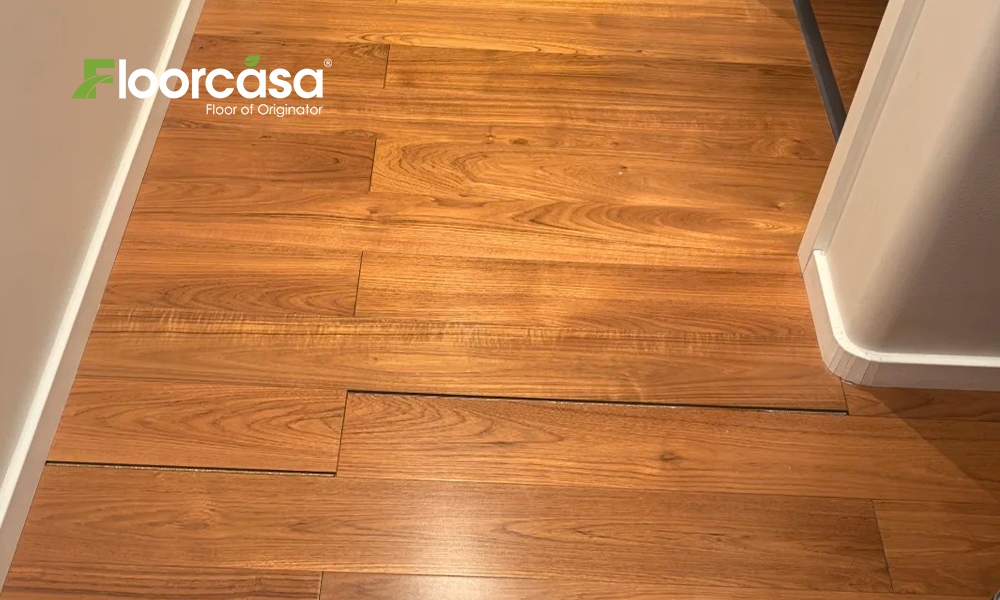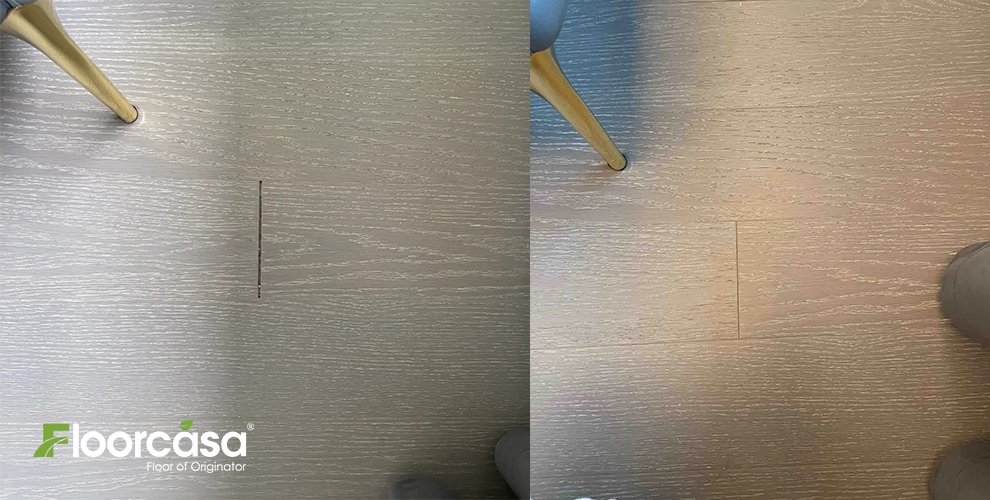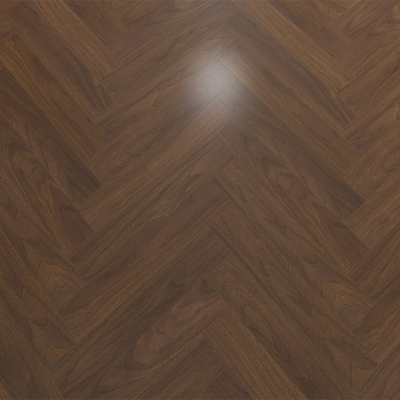Wood Floor Gaps Getting Bigger? Causes Unveiled and Fixes Explained
Seeing unexpected gaps open up between your beautiful wood floorboards can be worrying! At Floormaker Home, we know it’s a common frustration. Don’t panic – most gaps are a natural response to seasonal changes, and many are fixable. Here’s your straightforward guide to understanding and managing wood floor gaps:
1. Why Do Gaps Appear? It’s All About Moisture!
Wood is a natural, "live" material that constantly reacts to its environment. When the air in your home gets dry (especially during winter with heating on), wood loses moisture and shrinks. This shrinkage pulls the planks away from each other, creating those visible gaps. It’s wood’s natural "breathing" process.
2. Normal vs. Problematic Gaps: Know the Difference
Normal: Small, seasonal gaps (width of a dime or less) appearing in winter that mostly close up when humidity rises in spring/summer.
Problematic: Large gaps (wider than a nickel), gaps that don’t close seasonally, gaps only in specific areas, or gaps accompanied by cupping/crowning. These signal potential installation issues or excessive moisture loss.
3. DIY Fixes for Minor Seasonal Gaps:
Boost Humidity: The BEST solution! Aim for 30-50% relative humidity year-round using a whole-home humidifier or portable units, especially in dry months. This allows wood to regain moisture and expand, naturally closing gaps.
Gentle Cleaning: Keep gaps free of debris which can prevent closing. Use a soft brush attachment on your vacuum.
Wood Filler (Temporary Fix): For small, persistent gaps in prefinished or engineered floors, use a flexible, color-matched wood filler only during the dry season. Avoid rigid putties – they’ll crack! (Note: Avoid filler on unfinished or site-finished solid floors meant to move).
4. When to Call the Professionals (Like Floormaker Home!):
Large, Permanent Gaps: Indicates significant shrinkage or possible installation issues (like over-nailing or insufficient acclimation).
Localized Gapping: Gaps concentrated in one area often point to localized moisture problems (leaks, sun exposure) or subfloor issues.
Gaps with Other Damage: If gaps accompany warped, cupped, or loose boards.
Need for Board Replacement/Repairs: Severely shrunken boards might need professional repair or replacement.
Refinishing Consideration: For widespread, permanent gaps on solid floors, sanding and refinishing after humidity is stabilized might be an option (consult us first!).
5. Prevention is Key: Stop Gaps Before They Start!
Proper Acclimation: Crucial! Let wood planks sit in your home’s environment (in the room they’ll be installed) for the time recommended by your manufacturer (usually 3-7 days) BEFORE installation. Floormaker Home always follows strict acclimation protocols.
Climate Control: Maintain that 30-50% humidity consistently! Use humidifiers in winter and dehumidifiers/AC in humid summers. A simple hygrometer helps you monitor.
Expert Installation: Ensure correct expansion gaps around the room’s perimeter and proper fastening techniques. Poor installation is a major cause of excessive gapping.
Don’t Let Gaps Get You Down!
Most wood floor gaps are a harmless, seasonal quirk of natural materials. By understanding the cause and managing your home’s humidity, you can minimize their appearance significantly. For those stubborn, problematic gaps, or if you’re unsure, the Floormaker Home team is here to help!
Got Gaps Worries? Contact Floormaker Home today for a professional assessment! We’ll diagnose the cause and recommend the best solution to get your floors looking seamless and beautiful again.
visit [www.floorcasa.com]







